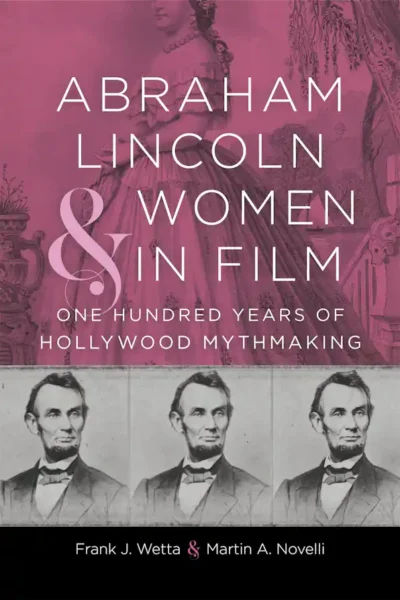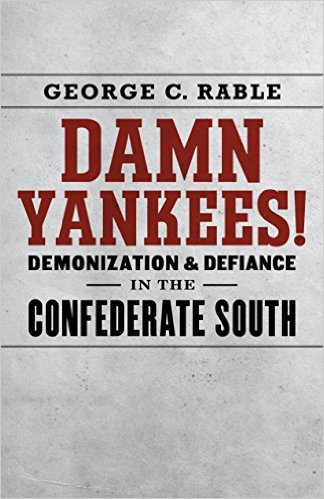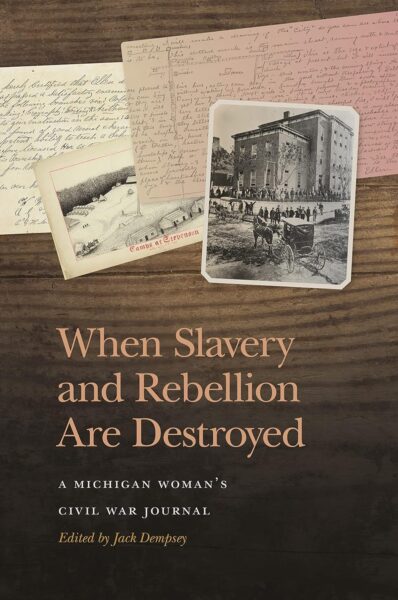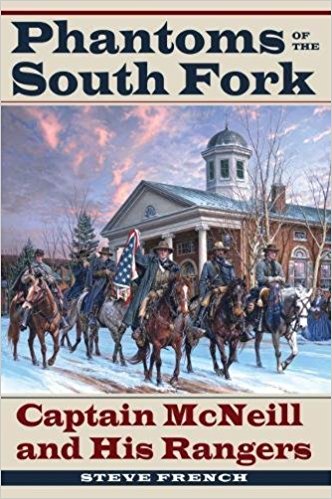Confederate Visions: Nationalism, Symbolism, and the Imagined South in the Civil War by Ian Binnington. University of Virginia Press, 2013. Cloth, ISBN: 978-0813935003. $39.50.
 At one time, the very phrase “Confederate nationalism” was likely to elicit scepticism, perhaps even scorn. The Confederacy only lasted for four, short years. It was based on the morally abhorrent system of slavery. The similarities between northerners and southerners surely outweighed their differences. How could the Confederacy have produced a genuine nationalism? Such scepticism has been challenged in recent years by a raft of studies, beginning with Drew Gilpin Faust’s pioneering 1988 work The Creation of Confederate Nationalism. Since then, and particularly within the last decade, Confederate nationalism has become a popular topic among Civil War historians. Their research has established that there really was such a thing as Confederate nationalism, which white southerners worked hard to create. It may not have lasted very long, and it may have been an artificially created justification for the preservation of slavery, but that does not disqualify it from being considered as nationalism. With Confederate Visions, Ian Binnington becomes the latest participant in a lively conversation about what nationalism meant to Confederates.
At one time, the very phrase “Confederate nationalism” was likely to elicit scepticism, perhaps even scorn. The Confederacy only lasted for four, short years. It was based on the morally abhorrent system of slavery. The similarities between northerners and southerners surely outweighed their differences. How could the Confederacy have produced a genuine nationalism? Such scepticism has been challenged in recent years by a raft of studies, beginning with Drew Gilpin Faust’s pioneering 1988 work The Creation of Confederate Nationalism. Since then, and particularly within the last decade, Confederate nationalism has become a popular topic among Civil War historians. Their research has established that there really was such a thing as Confederate nationalism, which white southerners worked hard to create. It may not have lasted very long, and it may have been an artificially created justification for the preservation of slavery, but that does not disqualify it from being considered as nationalism. With Confederate Visions, Ian Binnington becomes the latest participant in a lively conversation about what nationalism meant to Confederates.
In a nutshell, Binnington’s principal contribution is to draw our attention to the symbols from which Confederate nationalism was made. The most important such symbols, in Binnington’s estimation, were images of noble white southerners (Worthy Southrons, as he calls them), dastardly white northerners (Demon Yankees), and marginalized black southerners (Silent Slaves). These ingredients all came together in an overarching ideology that emphasized the continuities between the United and the Confederate States (Confederate Americanism).
Rather than undertaking a comprehensive investigation of how these symbols came together to produce Confederate nationalism, Binnington adopts a case study approach, with chapters on various aspects of the overall subject. This approach is at once a weakness and strength. It is a weakness because the whole does not quite hang together, and the book does not offer the kind of sustained, unified interpretation that many readers might want. It is a strength because it allows Binnington to range far and wide over the entire terrain of Confederate culture, sometimes shining bright lights into dark, obscure corners, and other times offering more of a wide-angled view of the landscape as a whole. Throughout, Binnington provides thoughtful analysis of the ideas and symbols that made up Confederate nationalism.
Chapters 2, 4, and 5 offer the most unity of theme and argument. Chapter 2 examines nationalism in literature before the war and Chapter 4 takes on the same topic during the war, while Chapter 5 looks at the figure of the Confederate soldier as a centrepiece of Confederate identity. In these chapters, Binnington’s major symbols come into clearest focus. As the author shows, the noble figure of the Worthy Southron appeared regularly in Confederate literature—even in antebellum novels that predicted an independent South—often in contrast to negative depictions of Demon Yankees as despicable “hirelings” or “alien hordes.” Emphasizing the worst traits of one’s foes is a classic nationalist technique, and southern writers proved particularly adept at it. Slaves were not entirely absent from this literature, but they most often appeared in caricature as loyal, unquestioning helpmeets—hence Binnington’s idea of the Silent Slave, another figure against which white southern writers defined themselves. The ultimate Worthy Southron, of course, was the Confederate soldier, and Binnington devotes the final chapter to the glorification of soldiers, especially leading generals like “Stonewall” Jackson.
The other chapters, which stand somewhat apart from the rest of the book, examine two important sites where Confederate nationalism took shape: in the public debates surrounding the Confederate constitution, and in the images that adorned the new nation’s currency. Each of these chapters provides an innovative take on the subject. As Binnington rightly points out, producing a written constitution was a peculiarly American means of nation making. Looking at reactions to the Confederate Constitution that appeared in period newspapers and speeches provides revealing insights into differing ideas about how the new nation ought to be defined, particularly in relation to the United States. Equally original and revealing is Binnington’s examination of the images that appeared on Confederate currency. Although it is unfortunate that the motivations behind the selection of these images remains undocumented, the images themselves provide clear evidence of a general shift in the tenor of Confederate nationalism. An emphasis on economic themes, including slave-based agriculture, gave way after the autumn of 1862 to “a more martial, distinctively Confederate vision of Americanism” thereafter.
Confederate Visions is more a collection of discrete essays than a comprehensive overview. It offers no complete answers to the underlying questions of what Confederate nationalism was, how it worked, and who created it. But it is bursting with valuable insights and possibilities for further study that will intrigue anyone interested in the American South’s brief experiment in nation making.
Paul Quigley is the James I. Robertson, Jr. Associate Professor of Civil War Studies at Virginia Tech and Director of the Virginia Center for Civil War Studies. He is the author of Shifting Grounds: Nationalism and the American South, 1848-1865 (2011).




